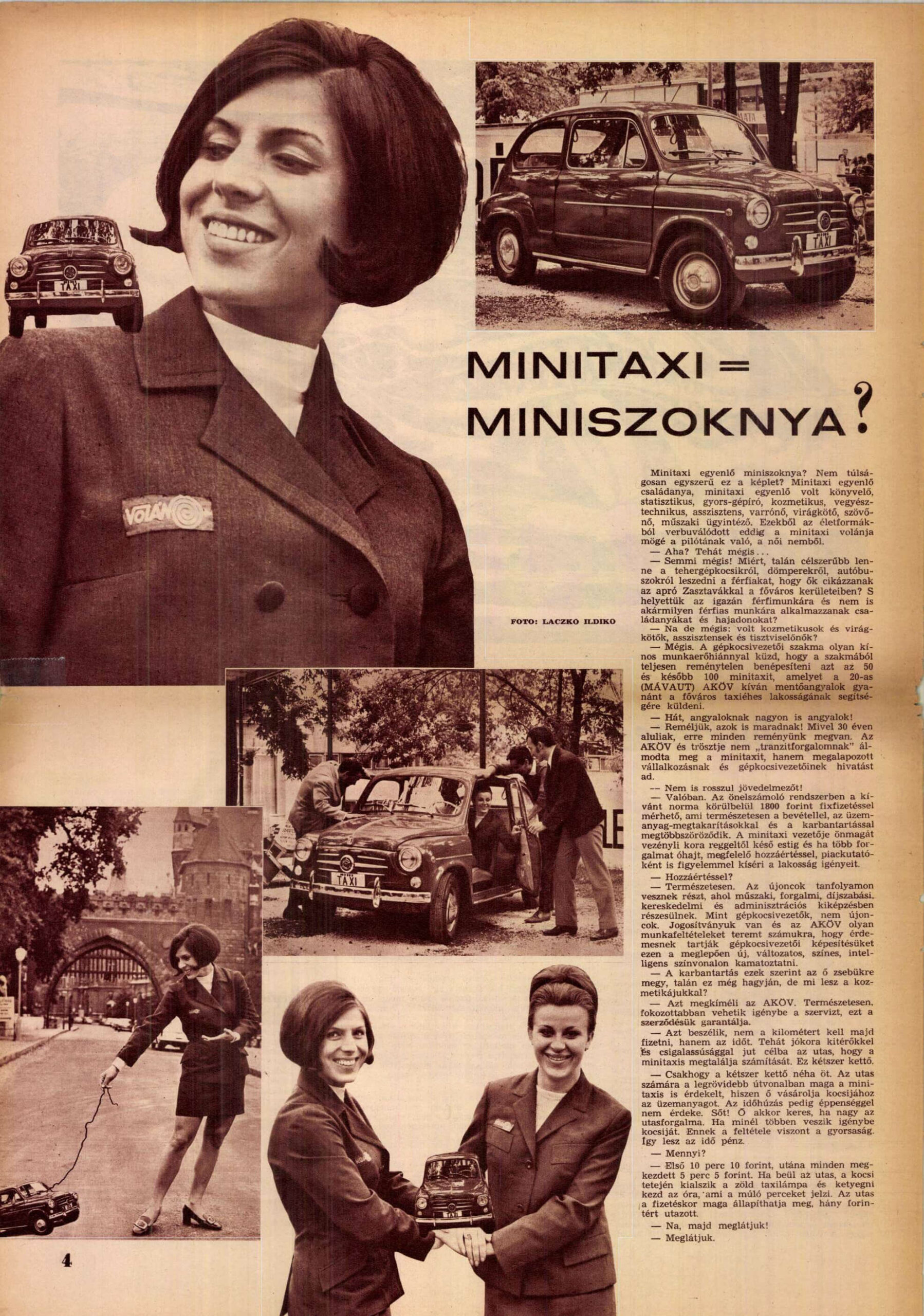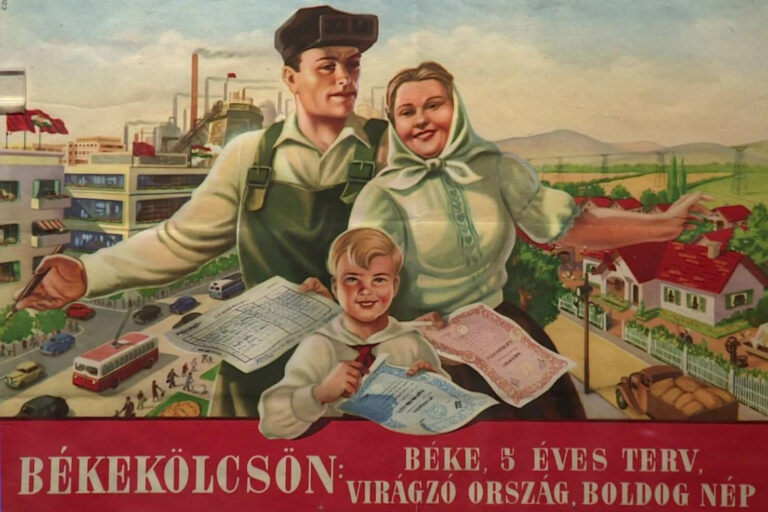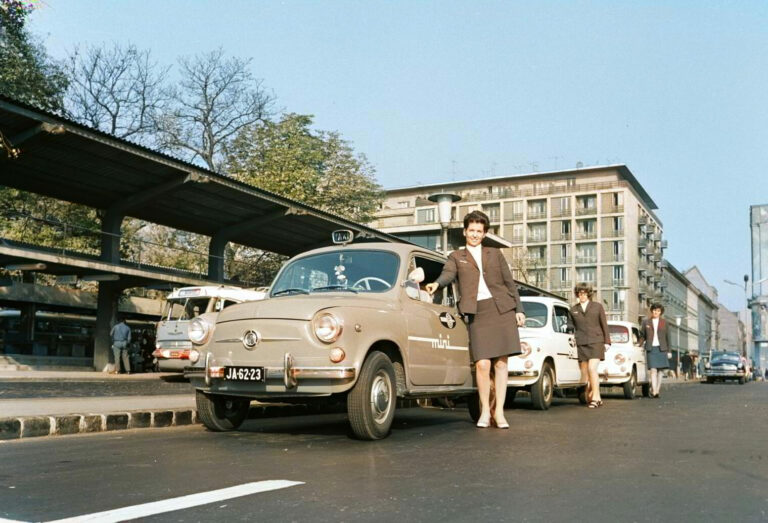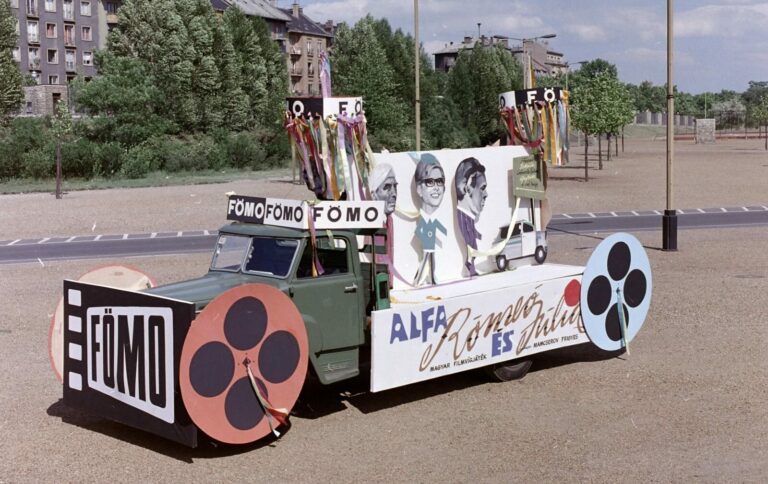1969-1974 - The crustacean Budapest "Mini-taxi" service 1.
Even the start of the Budapest mini taxi service, the essence of which was to expand and, according to the official position, to add colour to the already bipolar taxi service in the capital. It was as if the contemporaries were witnessing a market competition between the two major service providers, the main taxi and the Volán taxi, which was a rarity in the existing socialism.
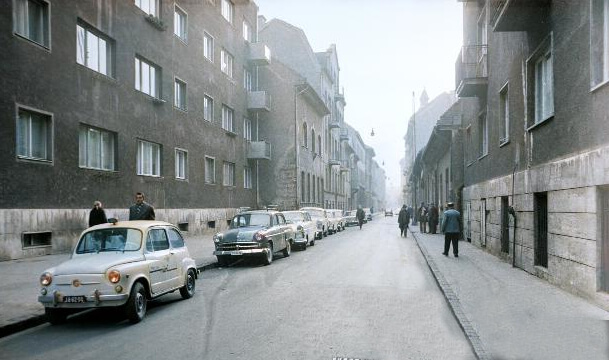
1971 A Zastava-750 mini-taxi in the foreground on a street in Budapest - Image source: Fortepan 284278 / Budapest Capital Archives. Archive reference: HU.BFL.XV.19.c.10 (coloured)
When the service started (1969), there were about 1430 cars waiting for the public at 150 stands on the streets of Budapest, which, although not seemingly insufficient, could not meet the increased demand. (To compare: in 1938, there were 313 stands and 1517 taxis in the capital, although the city area and the number of inhabitants had grown considerably.)
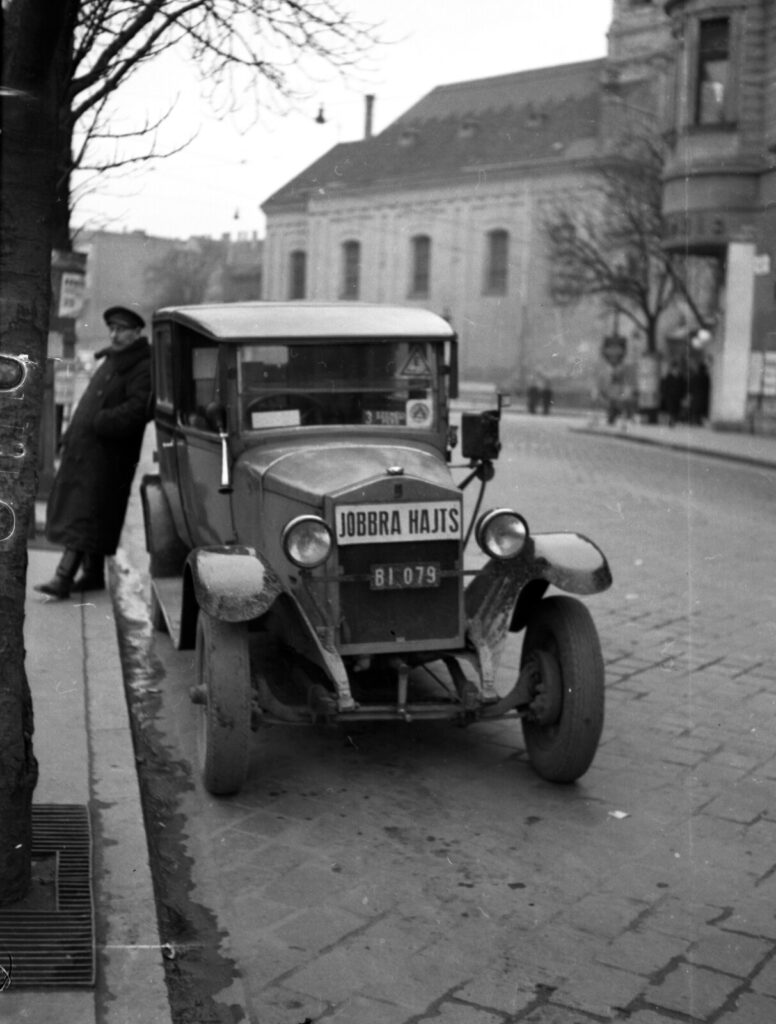
1941 Budapest I. Tunnel Street looking towards the church on Krisztina Square. Image source: fortepan 71742 / Tivadar Lissák
The Volán (AKÖV-MÁVAUT) entered the taxi business relatively late, on 20 December 1968, with a few brand new Volgas, originally with the aim of serving the needs of the passengers of the Engels Square (Elisabeth Square) bus station and providing door-to-door transport for those arriving from remote parts of the country. In the next year or so, the number of cars increased to 80 and the service was extended to the whole of Budapest. Their concept was very different from the protocol offered by Főtaxi: drivers were dressed in smart uniforms and, unlike Főtaxi at the time, they were allowed to carry luggage. They didn't stop at drugstores, but cruised around the city's busy intersections looking for passengers. The cars were maintained and driven by two drivers, using a biplane system, with a fairly high occupancy rate.
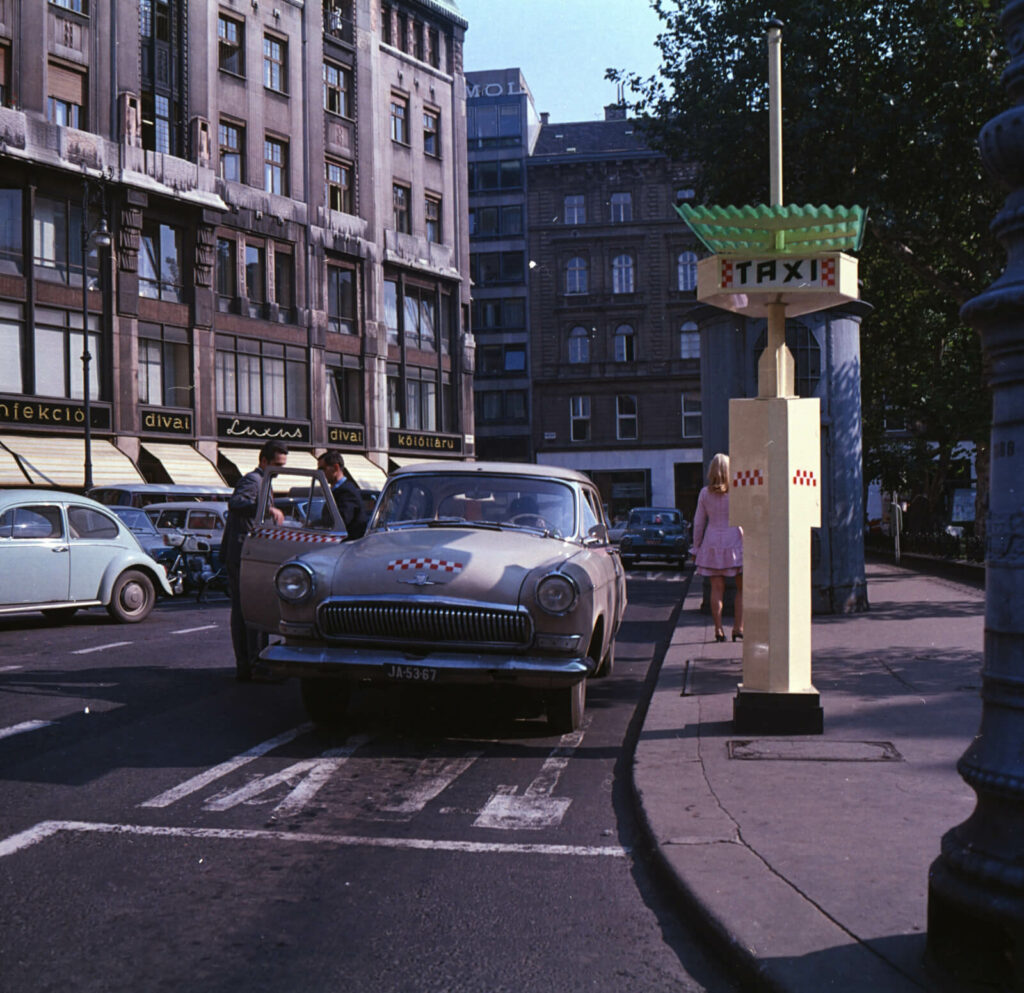
1969 Budapest V. Vörösmarty Square taxi stand, Luxus Store in the background. - Image source: 252595 / FŐMTERV / Domonkos Endre
The new "mini" taxi service was introduced in the second half of 1969 (officially on 2 October) as a new entrant to this market, which was not typically colourful at the time, also under the auspices of AKÖV 20 (Budapest). The almost revolutionary idea - and practice - was brilliant: in addition to the large Volgas, which often only carried one passenger and were therefore already cumbersome in the capital's traffic, small 750cc Zastavas were put into circulation, the first dozen of which rolled out of the gates of MÁVAUT's Andor Street premises in June and July. The operation was carried out in the tried-and-tested bureaucratic manner described above, with the drivers themselves taking care of both their working hours and the financing of the cars. The October issue of the Volán c magazine, quoted below, reports that fifty vehicles are already in service, while plans were for a hundred to be put into service.
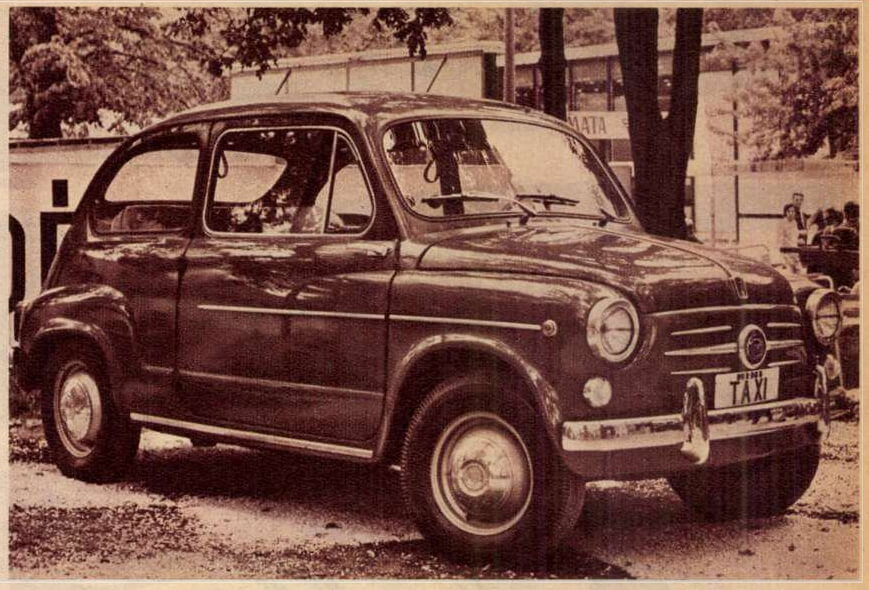
The real big thing, however, was not just the introduction of Zastava and the small car concept to the taxi market, but the idea of having young, preferably pretty girls and women running the cars. In retrospect, of course, it is clear that AKÖV was trying to make a virtue or an advantage out of necessity, since the shortage of drivers in the capital was chronic at the time, so even if it had wanted to, the company would not have been able to employ 50 new male workers in this area without a serious shortage of drivers from other areas.
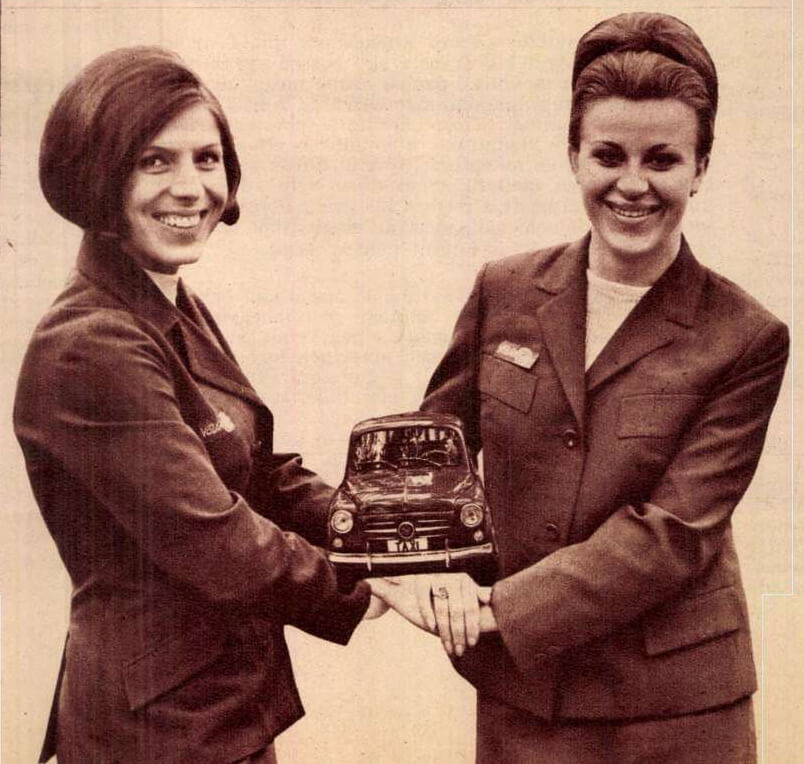
The ladies were recruited through advertisements in newspapers, which were - by today's standards - rather sexist, seeking "preferably well-educated, good-looking women under thirty, preferably with a high school diploma or a good education", who could even be trained at the company's expense.
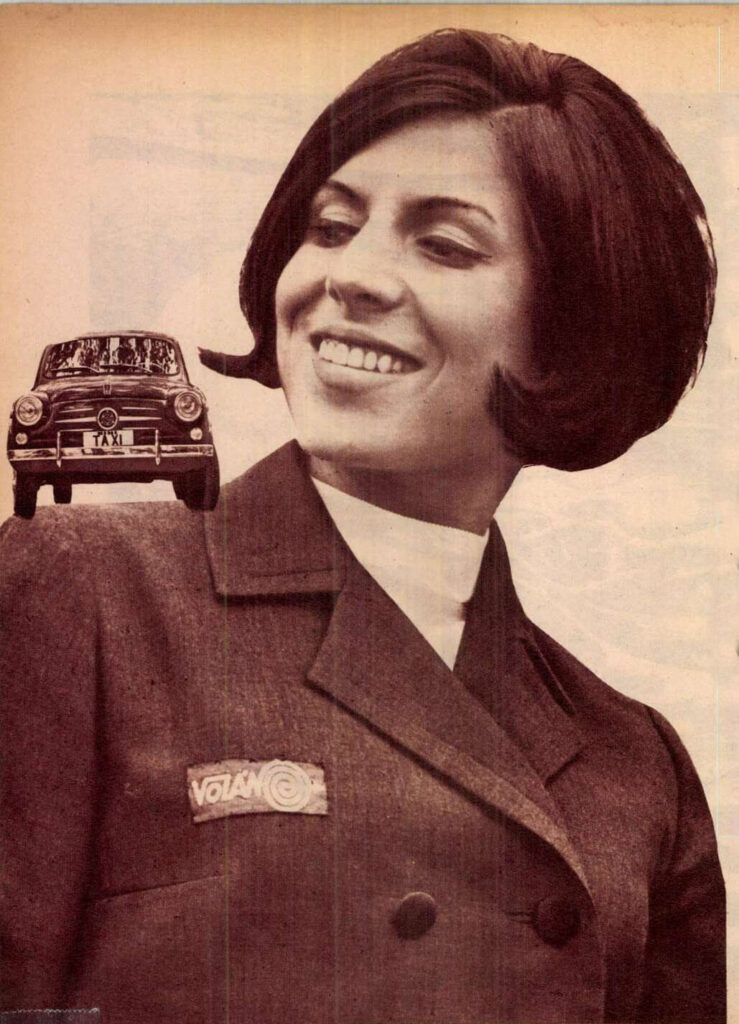
One way or another, the fleet was up and running: by October, fifty pretty young girls and women dressed in tasteful formal dresses awaited the capital's taxi-hungry public, and immediately found themselves under fire from the underworld, addressed in their femininity and politically attacked. Their existence was a recurrent source of humour not only on pub tables but also in the columns and jokes of various newspapers, and there were even some that were quick to clarify whether the minicab phenomenon was compatible with socialist morality.
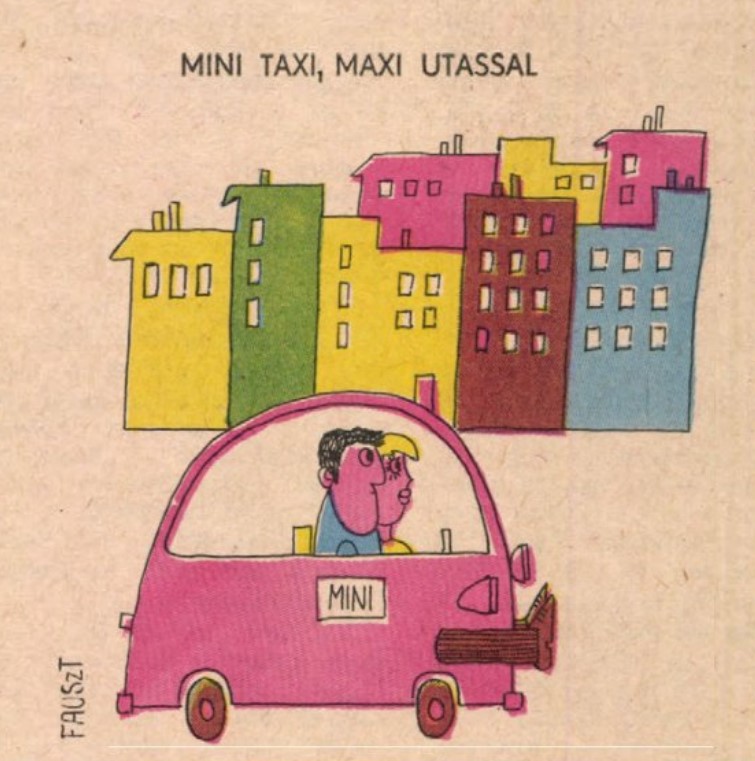
Image source: arcanum / Ludas Matyi 1970
It is difficult to say today whether the existence of the minicab gave the process a boost or whether it would have happened anyway, but after only a few months of operation, MÁVUT launched a new unit - VOLÁNTOURIST - on 1 January 1970, officially for domestic and international tourist services and passenger services from Budapest. The XX rental car fleet, Volán, Mini and (Pest) county taxi services, among others, were also outsourced to it.
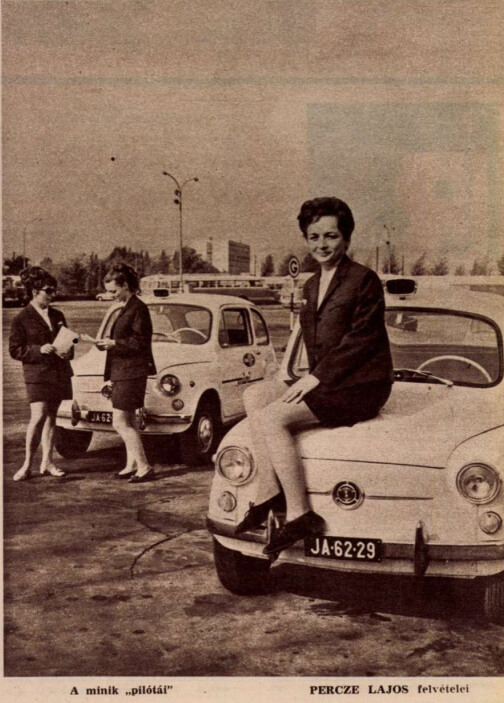
Image source: arcanum / Lobogó 1969
Unfortunately, storm clouds began to gather over the "mini-taxi" service relatively soon. After just three years of operation, a chronic shortage of staff, the technical content of the 750 Zastava, which was totally unsuitable for the task, and a general lack of resources made it clear that the venture was doomed to failure in the circumstances. By the first half of 1974, the service had completely disappeared, but the second of the following writings, written in 1972, sounded the alarm a year and a half earlier.
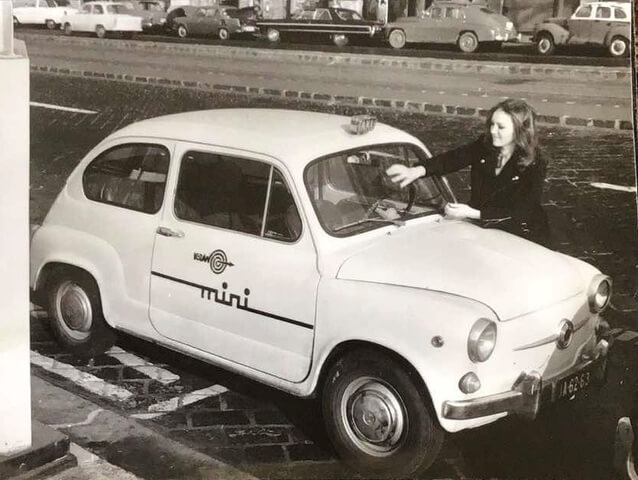
Juli Földi mini-taxi driver with her car - Image source: hvg,hu
Here are two papers on "Volán" c journal, first about the charming and optimistic beginnings 1969 Octoberand then - in a separate post 1972 Julywhich confronts the reader with the unsustainability of the service. (The language of the writings is sometimes almost unacceptable to today's eyes, but they reveal a lot, not only about the Mini-taxi as a service, but also about the time in which the lines were written.)
It was a good idea, a nice thought. It's a pity.
The following article is not signed by the author, the photos are by Ildikó Laczko, not otherwise indicated.
♠

Minicab equals miniskirt? Isn't this formula too simple? Mini-maxi equals mother, mini-maxi equals former accountant, statistician, typist, beautician, chemical technician, assistant, seamstress, florist, weaver, technical administrator. It is from these lifestyles that the female sex of the driver has so far emerged behind the wheel of the minicab.
- Really? So you did...
- Nothing though! Why, perhaps it would be more practical to get men off trucks, dump trucks, buses, so that they can cruise around the capital's districts in their tiny Zastavas? And instead employ mothers and unmarried women for the really manly work, and not just any manly work?
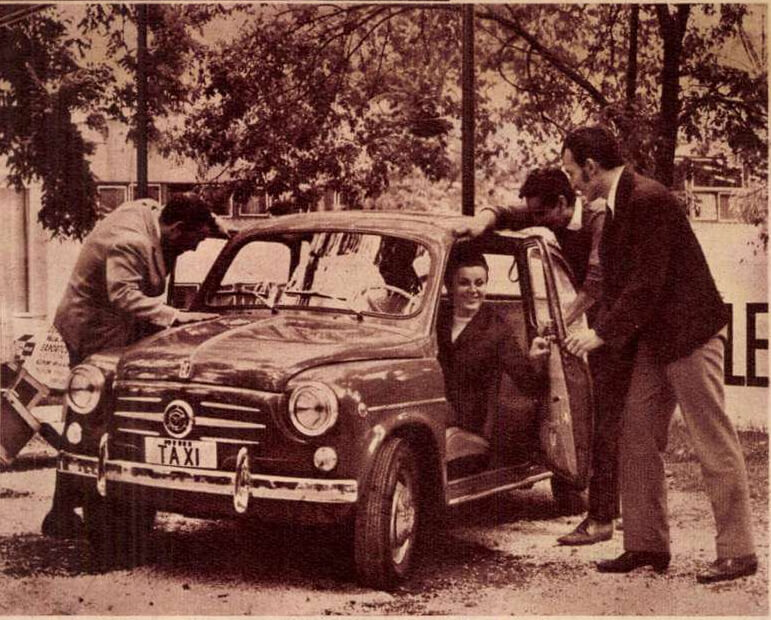
- But still: were there beauticians and florists, assistants and clerks?
- Yet. The motoring profession is facing such an embarrassing shortage of manpower that it is absolutely hopeless to populate the 50 and later 100 minicabs that the 20 (MÁVAUT) AKÖV intends to send as rescue angels to help the taxi-hungry population of the capital.
- Well, they are angels to angels!
- Let's hope they stay that way! As they are under 30, we have every hope. The AKÖV and its trust did not dream up the minicab as a "transit", but as an established business and a vocation for its drivers.
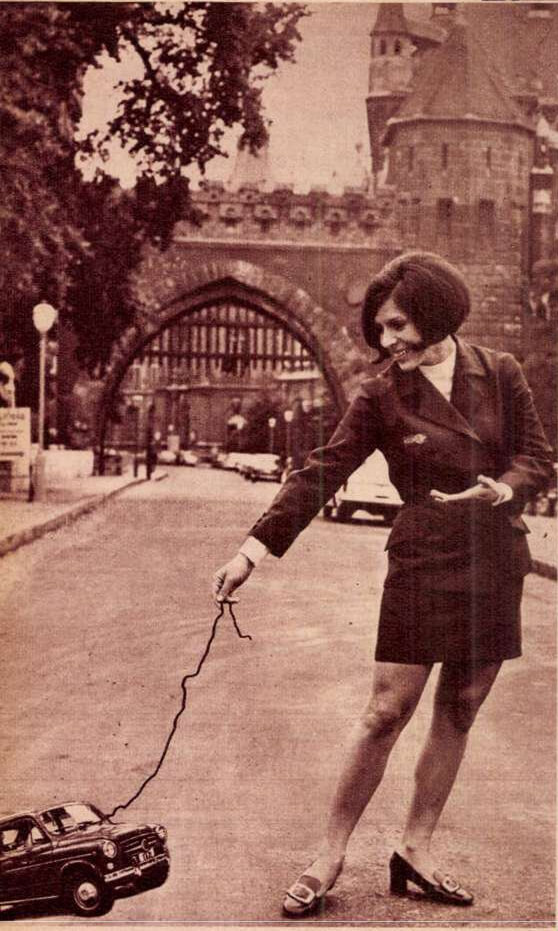
- And not a bad one either!
- Indeed. In a self-calculating system, the desired standard is measured by a fixed payment of about 1800 HUF, which of course multiplies with revenue, fuel savings and maintenance. The driver of the minicab drives himself from early in the morning until late at night and, if he wants more traffic, he can also monitor the needs of the population with the appropriate competence as a market researcher.
- With touch?
- Of course. The newcomers attend a training course where they receive training in technical, traffic, pricing, commercial and administrative skills. As drivers, they are not newcomers. They have a driving licence and AKÖV provides them with the working conditions that make it worthwhile for them to use their driving qualifications to this surprisingly new, varied, colourful and intelligent level.
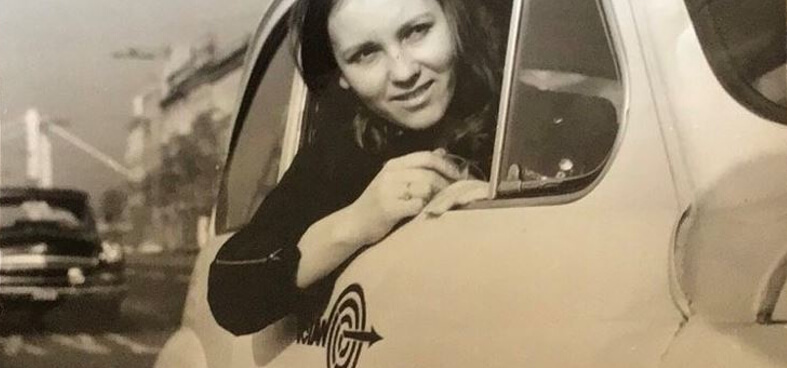
Juli Földi mini-taxi driver with her car - Image source: hvg,hu
- So maintenance is on their pocket, maybe that's fine, but what about their cosmetics?
- The AKÖV will spare you that. Of course, you can make more use of the service, guaranteed by your contract.
- They say that you will not pay for the kilometres, but for the time. So it takes a lot of detours and a lot of snail's pace to get to your destination, to make sure the minicab finds its destination. That's two times two.
- But two times two is sometimes five. For the passenger, the shortest route is also in the interest of the minicab itself, since it is the minicab that buys the fuel for its car. And he has no interest in stalling. In fact! He earns his money when his passenger traffic is high. If he gets as many people to use his car as possible. But that requires speed. That's how time becomes money.
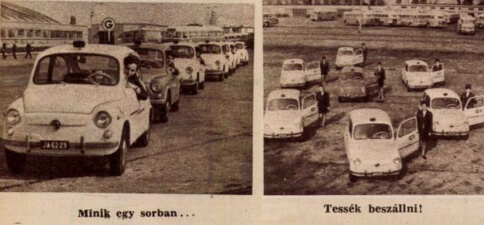
Image source: arcanum / Lobogó 1969
- How much?
- The first 10 minutes are 10 HUF, after that every 5 minutes 5 HUF. When the passenger gets in, the green taxi light on top of the car goes out and the clock starts ticking, indicating the minutes. When paying, the passenger can see for himself how many forints he has paid.
- Well, we'll see!
- We'll see.
♠
